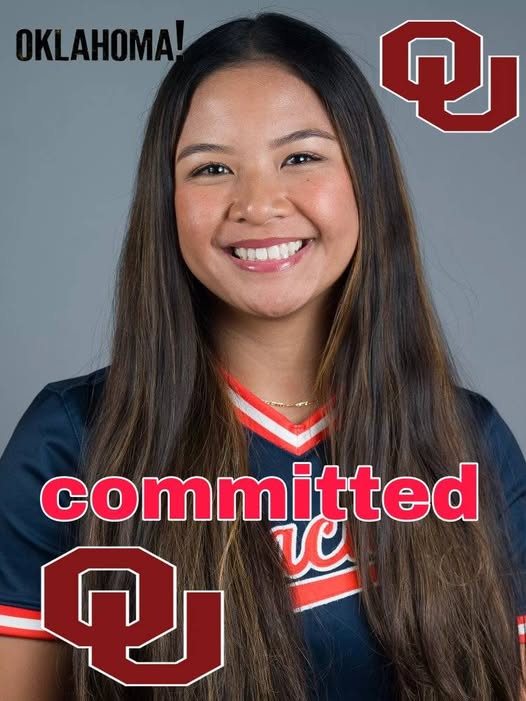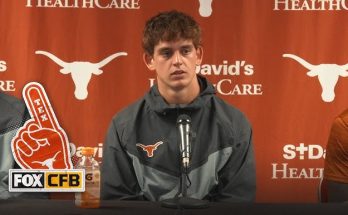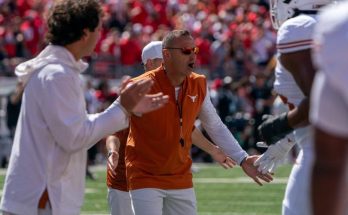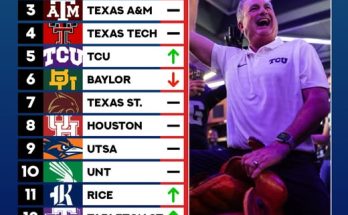When a No. 1-ranked football recruit makes a commitment, it sends shockwaves throughout the college football landscape. These are the athletes who have not only proven themselves against the best in high school but have also demonstrated traits—athleticism, IQ, leadership, and dedication—that project them as future stars at the collegiate and even professional level. So when the top football recruit in the nation publicly committed to the Oklahoma Sooners over perennial powerhouses like Alabama, BYU, and Tennessee, the sports world took notice. But this decision is far more than just a name on a commitment letter. It reflects broader trends in college football, from recruiting strategies and NIL (Name, Image, Likeness) deals to coaching stability, development potential, and personal values.
To truly understand the magnitude of this commitment, we have to examine several layers—starting with the player himself. This recruit isn’t just another five-star athlete. He’s a generational talent. Standing at 6-foot-4 and weighing 225 pounds, he plays with a maturity and polish that coaches dream of. Whether it’s making precise throws under pressure, reading defenses like a seasoned NFL quarterback, or leading his team during crucial moments, he’s shown all the intangibles of a future Heisman Trophy contender. He’s not just ranked No. 1 based on hype but through consistent domination in elite high school football programs and showcases such as the Elite 11, The Opening, and national 7-on-7 tournaments. NFL scouts have already taken notice, and college coaches have long tried to position themselves at the front of the line for his signature.
That’s what makes his decision to commit to Oklahoma so fascinating. Alabama, Tennessee, and BYU were not just involved in the recruitment—they were deeply embedded in it. Alabama, the titan of college football, with a trophy case that gleams with national titles and a recent history of sending quarterbacks to the NFL, was thought to be a frontrunner. Tennessee, under head coach Josh Heupel, had made strides in rebuilding its program, and the Volunteer faithful believed this recruit could be the missing piece to return them to national prominence. BYU was the wildcard—while not a traditional powerhouse, the Cougars had developed a strong recruiting pitch centered around faith, development, and NFL pipelines like that of Zach Wilson. And yet, despite all these compelling cases, the recruit chose Oklahoma.
So why Oklahoma? The answer lies in both the past and future of the program. Under head coach Brent Venables, the Sooners have committed to a long-term vision of returning to the elite ranks of college football, and this vision deeply resonated with the recruit and his family. While Venables is known for his defensive prowess, his staff—including offensive coordinator Jeff Lebby—has built a quarterback-friendly system that blends the air raid concepts that Oklahoma has become known for with an emphasis on player development. The recruit reportedly visited Norman several times, and each visit confirmed to him that the program wasn’t just about winning games—it was about building men.
Moreover, Oklahoma has built a strong tradition of quarterback excellence. From Baker Mayfield to Kyler Murray to Jalen Hurts, the Sooners have developed QBs into both Heisman winners and NFL stars. Even though the coaching staff has changed since the Lincoln Riley era, the program’s DNA remains steeped in explosive offense and quarterback empowerment. This No. 1 recruit wants to be the next in line. He sees Oklahoma as a place where he can step into a legacy, write his own chapter, and bring championships back to Norman.
But beyond the football field, the influence of NIL cannot be ignored. In the modern recruiting landscape, NIL deals have become a pivotal factor in a prospect’s decision-making process. While details of any potential NIL agreement for this recruit haven’t been made public, insiders suggest that Oklahoma offered a compelling package that aligned with the athlete’s brand and values. Importantly, it wasn’t just about money. The NIL infrastructure at Oklahoma—bolstered by supportive alumni, local businesses, and national partnerships—offers young athletes guidance, mentorship, and a sustainable plan for capitalizing on their image without compromising their growth. In short, the recruit saw a complete package: athletic development, educational support, financial empowerment, and a fan base ready to embrace him.
Of course, this commitment was the result of years of hard work by Oklahoma’s recruiting staff. Relationships matter in recruiting, and the Sooners built theirs slowly and authentically. They didn’t pressure him. They didn’t oversell. Instead, they offered consistency, honesty, and patience. When other programs pushed harder or tried to dazzle him with flash, Oklahoma played the long game. The recruit’s family appreciated that. They valued character and integrity. According to those close to the recruitment process, the family loved how Oklahoma treated them—not just as commodities, but as people. That emotional connection proved decisive.
For Alabama, Tennessee, and BYU, this is a tough pill to swallow. All three programs invested heavily in their pursuit. Alabama, still reeling from the retirement of Nick Saban and in a transitional phase under Kalen DeBoer, hoped to signal that they still owned the recruiting landscape. Tennessee had sold the recruit on being the centerpiece of their offensive evolution, while BYU pitched a personalized approach rooted in family and faith. None of them failed in their recruitment—they were simply outmatched by a program that offered the perfect blend of football, faith, future, and familiarity.
There’s another dimension to this story that’s worth exploring: the ripple effects. When a No. 1 recruit chooses a school, it often triggers a domino effect across the country. Other recruits take notice. Some may want to follow. Wide receivers, offensive linemen, and running backs may now consider Oklahoma more seriously, knowing they’ll be lining up with an elite quarterback. The 2025 recruiting class for the Sooners suddenly looks more formidable. Meanwhile, the other programs may have to pivot, reshuffle their boards, and perhaps reconsider their offensive priorities.
For the recruit himself, the journey is just beginning. The spotlight will be brighter now. Every pass he throws this senior season will be dissected. Every media appearance, every social post, every game performance will be measured against the expectations of being “the chosen one.” That’s the burden of greatness. But this young man appears ready. Coaches and mentors describe him as level-headed, mature beyond his years, and fully aware of the responsibilities that come with being a high-profile recruit. He embraces the grind, doesn’t seek the limelight unnecessarily, and is described as coachable and humble—a rare blend in an era where hype often overtakes substance.
His decision also speaks to a broader shift in college football. Geography is no longer destiny. The idea that a recruit from a certain region is more likely to commit to a nearby powerhouse is becoming obsolete. Today’s elite athletes have access to private jets for official visits, NIL deals that transcend regional loyalties, and digital tools that let them see every locker room, campus vibe, and coaching philosophy without ever leaving their home. This new landscape rewards programs that can tell the best story, offer the most value, and deliver long-term growth. Oklahoma did just that.
We must also credit the influence of peers. Modern recruiting isn’t just coach-driven—it’s player-driven. Recruits talk to each other. They form relationships at camps, on social media, during visits. Several current Sooners players, and even commits from previous classes, played a role in persuading this recruit to choose Norman. They shared their experiences, painted a picture of what life was like in the locker room, and made him feel welcome before he ever wore the jersey. In a world where culture matters more than ever, Oklahoma’s culture shone through.
Looking ahead, Oklahoma fans can now dream bigger. This commitment brings them one step closer to national title contention. With the Sooners set to transition fully into the SEC, the timing couldn’t be better. The conference leap will mean tougher competition, more national exposure, and a greater demand for elite quarterback play. This recruit knows that. He isn’t afraid of the challenge—he welcomes it. He wants to go toe-to-toe with the best in the country, and he believes Oklahoma gives him the tools to succeed.
It’s also a recruiting win that could serve as a launching pad for Brent Venables’ broader vision. After years of being a defensive guru, Venables now has a marquee offensive weapon to build around. This can attract more top-tier offensive talent, secure coaching stability, and send a clear message to the college football world: Oklahoma is back—not just as a contender, but as a destination.
In the end, the No. 1-ranked recruit didn’t just pick a school. He picked a future. He chose trust over tradition, fit over flash, and growth over gimmicks. In doing so, he reminded us all that while college football is filled with glitz and noise, the core of a great program is still built on relationships, vision, and the promise of becoming something greater.
This story is far from over. The recruit has yet to play his final high school season. Injuries, development, system fit, and coaching continuity will all play major roles in determining how successful he becomes. But the decision to commit to Oklahoma is more than a footnote—it’s a foundational moment. If he lives up to expectations, this could be a Heisman-worthy journey that began with a heartfelt commitment not to the flashiest program, but to the right one.
And for fans of college football, it’s yet another reminder of the ever-evolving chess game that is modern recruiting. It’s about strategy, connection, alignment, and timing. Oklahoma just made the right move at the right time—and secured a future that looks as bright as the stadium lights on a fall Saturday night in Norman.



